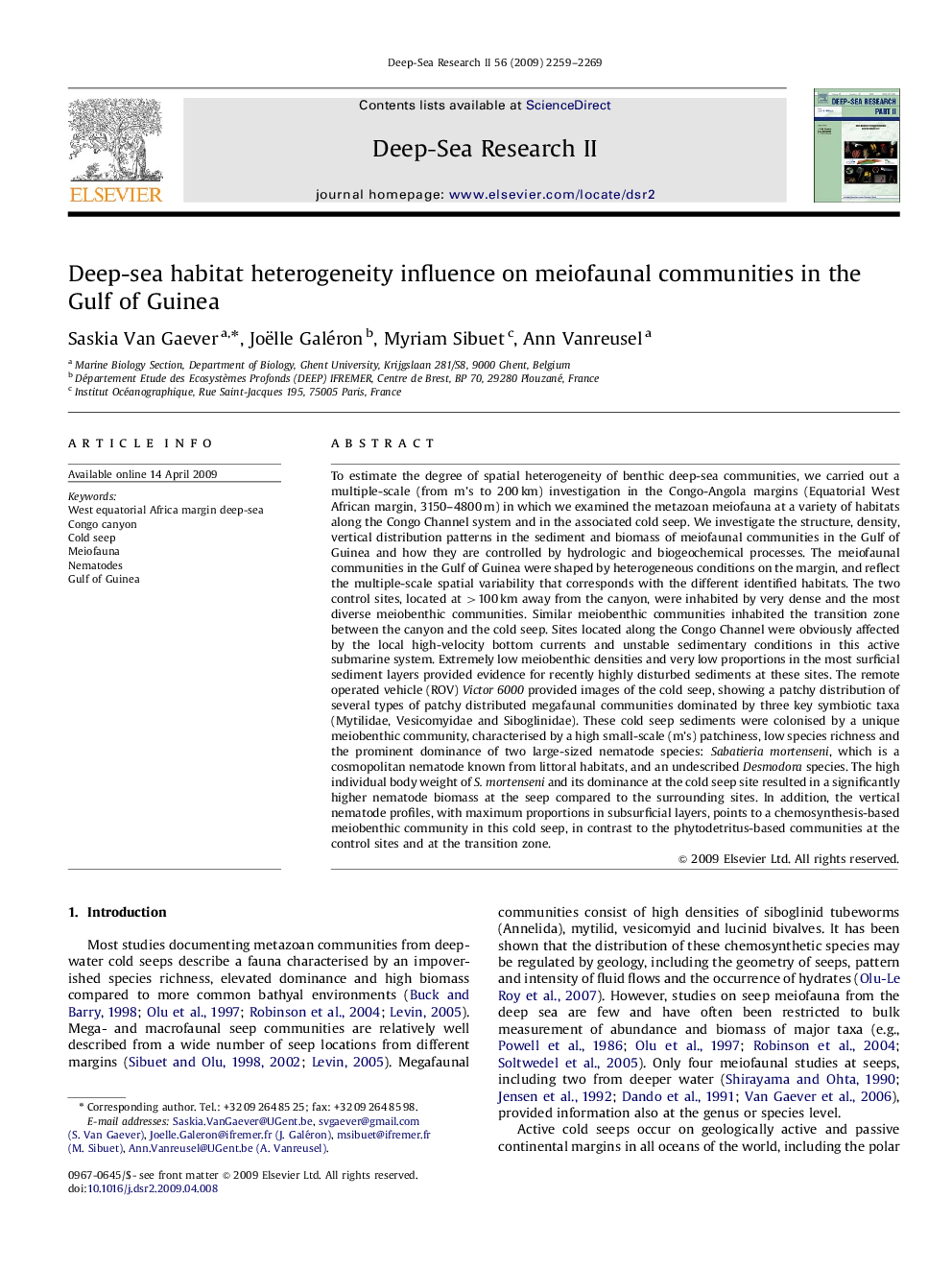| Article ID | Journal | Published Year | Pages | File Type |
|---|---|---|---|---|
| 4537448 | Deep Sea Research Part II: Topical Studies in Oceanography | 2009 | 11 Pages |
To estimate the degree of spatial heterogeneity of benthic deep-sea communities, we carried out a multiple-scale (from m's to 200 km) investigation in the Congo-Angola margins (Equatorial West African margin, 3150–4800 m) in which we examined the metazoan meiofauna at a variety of habitats along the Congo Channel system and in the associated cold seep. We investigate the structure, density, vertical distribution patterns in the sediment and biomass of meiofaunal communities in the Gulf of Guinea and how they are controlled by hydrologic and biogeochemical processes. The meiofaunal communities in the Gulf of Guinea were shaped by heterogeneous conditions on the margin, and reflect the multiple-scale spatial variability that corresponds with the different identified habitats. The two control sites, located at >100 km away from the canyon, were inhabited by very dense and the most diverse meiobenthic communities. Similar meiobenthic communities inhabited the transition zone between the canyon and the cold seep. Sites located along the Congo Channel were obviously affected by the local high-velocity bottom currents and unstable sedimentary conditions in this active submarine system. Extremely low meiobenthic densities and very low proportions in the most surficial sediment layers provided evidence for recently highly disturbed sediments at these sites. The remote operated vehicle (ROV) Victor 6000 provided images of the cold seep, showing a patchy distribution of several types of patchy distributed megafaunal communities dominated by three key symbiotic taxa (Mytilidae, Vesicomyidae and Siboglinidae). These cold seep sediments were colonised by a unique meiobenthic community, characterised by a high small-scale (m's) patchiness, low species richness and the prominent dominance of two large-sized nematode species: Sabatieria mortenseni, which is a cosmopolitan nematode known from littoral habitats, and an undescribed Desmodora species. The high individual body weight of S. mortenseni and its dominance at the cold seep site resulted in a significantly higher nematode biomass at the seep compared to the surrounding sites. In addition, the vertical nematode profiles, with maximum proportions in subsurficial layers, points to a chemosynthesis-based meiobenthic community in this cold seep, in contrast to the phytodetritus-based communities at the control sites and at the transition zone.
